The Treasures of Notre Dame
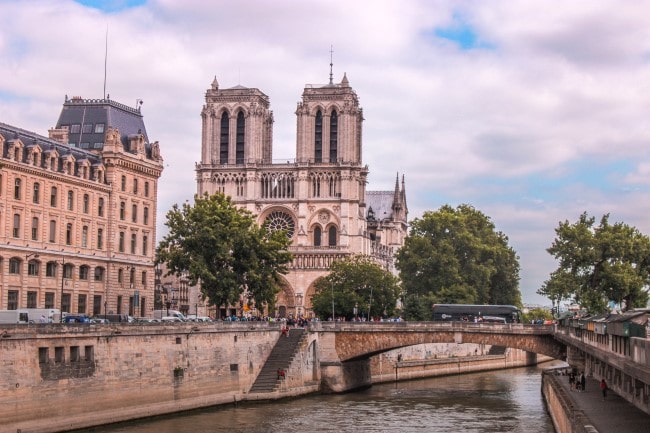

- SUBSCRIBE
- ALREADY SUBSCRIBED?
BECOME A BONJOUR PARIS MEMBER
Gain full access to our collection of over 5,000 articles and bring the City of Light into your life. Just 60 USD per year.
Find out why you should become a member here.
Sign in
Fill in your credentials below.
Do you find the Louvre completely overwhelming? Where, among the 35,000 treasures on display, should you start? Visiting one of the temporary exhibitions can be a good focus, perhaps passing through a hall or two of something else en route and currently – until January 29th in fact – there is an excellent one on offer. Tucked away in the Richelieu Wing are two or three little rooms dedicated to “The Treasury of Notre Dame Cathedral.”
The 120 or so works displayed tell the wide-ranging story of the riches connected to Notre Dame, many of which will be returning there when it reopens in December 2024. Despite its relatively small scale and its focus on just one aspect of the cathedral, namely its treasures, it’s a huge subject. Over a thousand years of history are covered, taking in many such weighty themes as religion and power. Here are 10 thoughts which I took away from my visit.
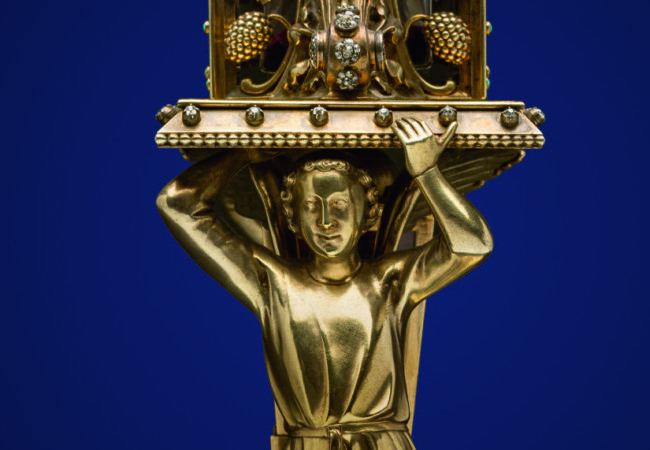
Poster for the Louvre exhibition, “The treasury of Notre-Dame Cathedral. From its origins to Viollet-le-Duc”
1. Religion has been pivotal at so many vital moments of French history. The exhibition opens with a succinct timeline, from the legendary mission of Saint Denis in the 3rd century to the fire which so nearly destroyed Notre Dame in April 2019. The bullet points on the key moments of 17 centuries encapsulate the sweep of the cathedral’s history: the pre-eminence of faith in the Middle Ages, the devastating wars of religion between Catholics and Huguenots in the 16th century and the plundering of cathedral treasures during the French Revolution, for example.
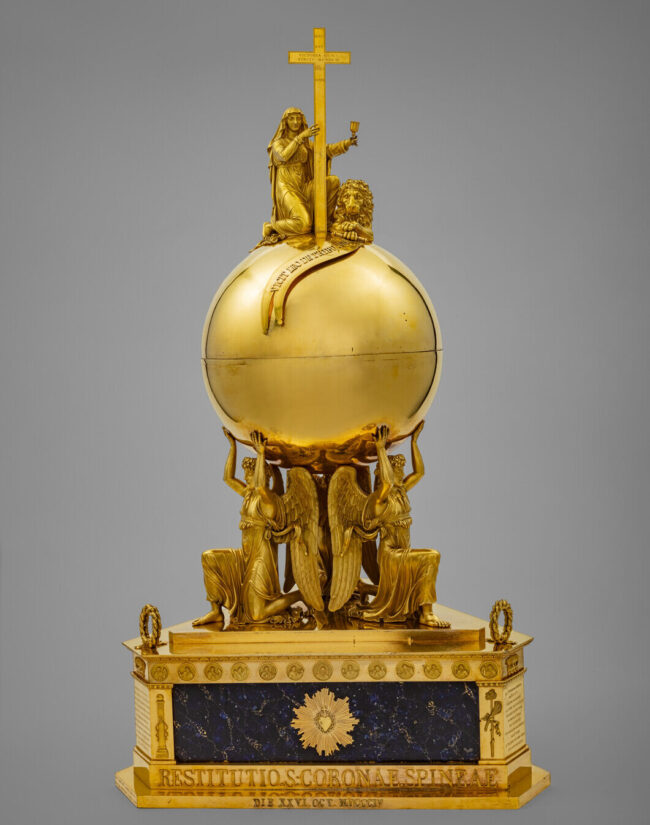
Jean-Charles Cahier, Châsse de la Couronne d’Epines, 1806, Trésor de Notre-Dame de Paris © Musée du Louvre, Guillaume Benoit
2. There are fascinating glimpses of the Dark Ages, even though so much has been lost. There’s a tantalizing reference in the cathedral’s earliest inventories to three of John the Baptist’s teeth, for instance. Among the oldest items on display is a copy of Historia Francorum (A History of the Franks), once owned by Gregory of Tours, who died in 594. Other manuscripts in the opening section include a charter issued by Charlemagne in 775, dedicating the site of Notre Dame to the Virgin Mary, medieval missals – the text used for mass – and richly-illustrated prayer books over which monks toiled for so long with their jewel-colored inks and precious golden highlights.
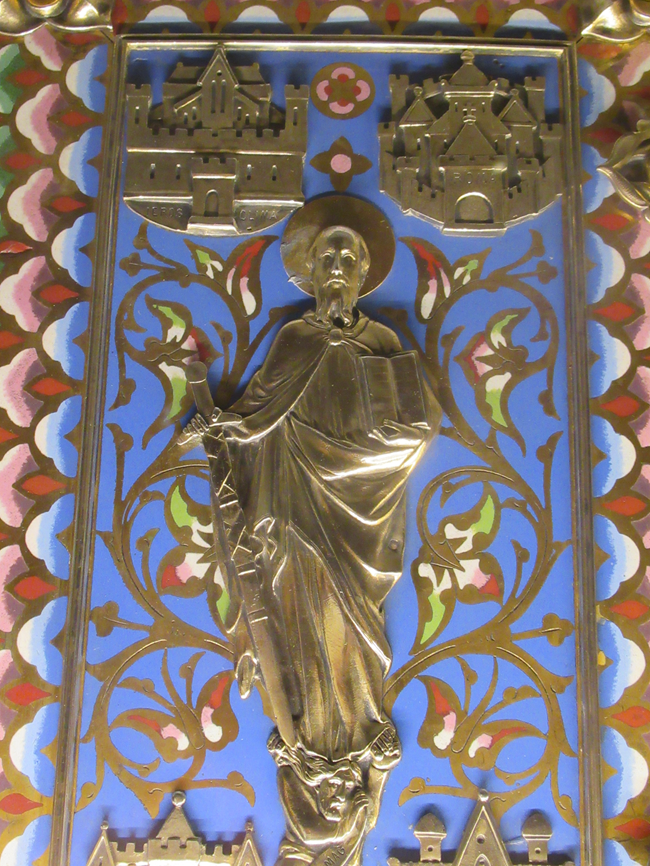
Missal case picturing St Paul. Photo: Marian Jones
3. Scenes pictured here illustrate how religion was practiced in the Middle Ages. Around 1120, a fragment of the True Cross was sent to Paris from the Holy Sepulchre in Jerusalem and its momentous arrival is depicted in a miniature painted in a service book, the Breviary of Louis de Guyenne. Another illustration in a 15th century prayer book shows the arrival of Louis IX in Paris in August 1239, bearing the Crown of Thorns from the Holy Land. These two little pictures, so easy to overlook, tell such a powerful story of faith in medieval France.

ivre des serments de l’Eglise de Paris. Registre en parchemin. Archives Nationales © Archives nationales
4. Religion and power were often intertwined, especially here at Notre Dame. The opening timeline includes a picture of Henri IV celebrating a Te Deum at Notre Dame after his coronation in Chartres. As a protestant from Navarre, it was important to establish himself in Paris at the beginning of his reign and to remind his subjects that he had converted to Catholicism. Another reproduction shows the extremely pious Louis XIII rededicating the cathedral to the Virgin Mary, a powerful underlining of his catholic faith during the 30 Years War.
During the revolution Notre Dame was deconsecrated and labeled a “Temple of Reason.” Those who had assumed power wanted to destroy the faith they saw as a threat. But just a few years later, in 1802, Napoleon, keen to have support from the church to underpin rather than oppose his rule, signed the Concordat which allowed the return of Catholic worship to Notre Dame. Whoever sought power had to deal with religion, defeating it or aligning himself with it.
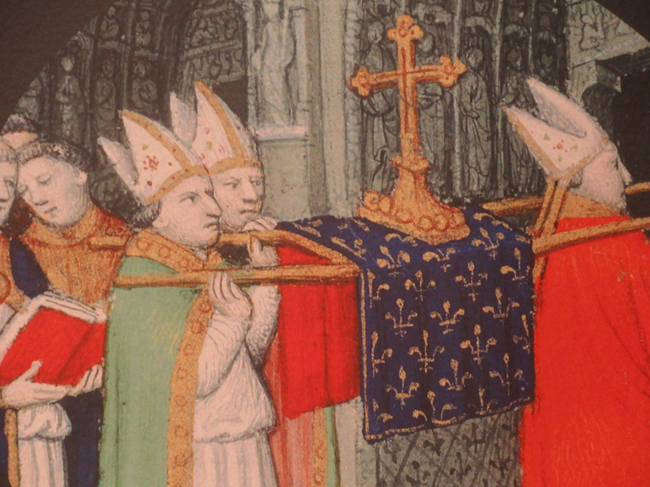
Henri IV celebrating a Te Deum, 1594. Photo: Marian Jones
5. There was much emphasis on the importance of show. Displays of wealth and splendor were never lacking in the cathedral’s long history, as the richly decorated robes, beautifully illustrated manuscripts and priceless liturgical objects from across the centuries attest. This comes out particularly in the section showing objects made especially for Napoleon’s coronation: huge golden candlesticks, magnificent robes and a towering processional cross. Tellingly, Napoleon commissioned an enormous painting from Jacques-Lous David to capture the scene for posterity. The original is elsewhere in the Louvre, but there’s a copy here in the exhibition.
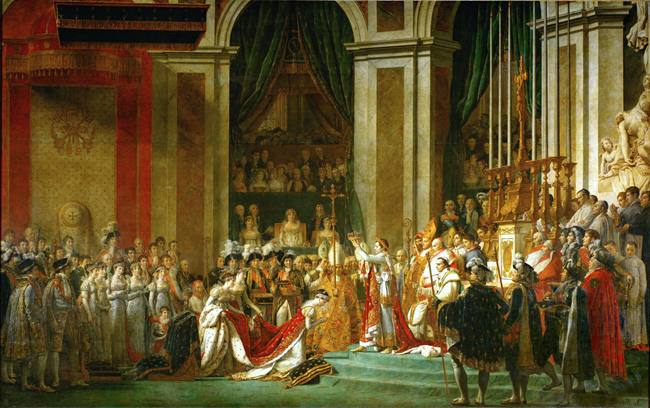
Jacques-Louis David, The Coronation of Napoleon (1805-1807). Credit: Art database/Wikimedia
6. Loss and destruction often loomed large. Notre Dame’s Treasury was devastated during the Wars of Religion in the 1500s and again during the revolution when church property was nationalized and countless religious objects destroyed. In August 1792 many treasures were deemed “national property” and taken by tumbril to the Hôtel de Ville, then melted down at the Hôtel de la Monnaie. Further damage was done by looting in the revolution of 1830 when the sacristy and treasury were destroyed. The painting of a cathedral canon holding the design for Jacques-Germain Soufflot’s reconstruction of the building is a reminder of the work which followed.
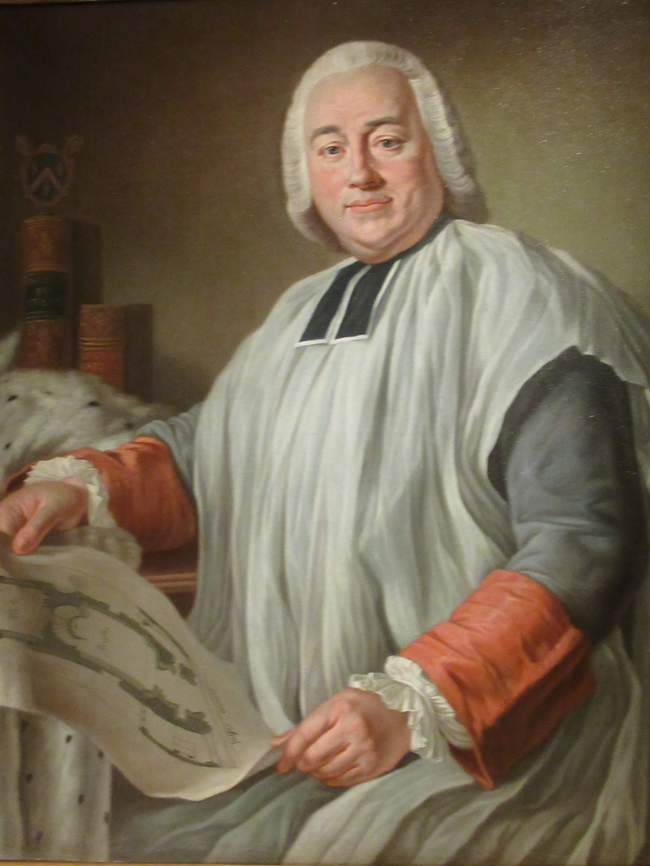
Painting of a canon with plans for a new sacristy. Photo: Marian Jones
7. Some of the exhibits here are not quite as they first appear. There’s a stunning bust of Louis IX, seemingly gazing at you from the 13th century. But it was actually crafted 600 years after his death, during the mid–19th century restoration of Notre Dame supervised by the architect Eugène Viollet-le-Duc. He specialized in renovating medieval buildings, often recreating aspects which had long disappeared, sometimes even adding things he thought should have been there! This bust of Louis was deliberately designed to look medieval. It was based on the reliquary head found in the Sainte Chapelle and used the medieval technique of applying layers of silver leaf to a wooden core. The stunning missal cases nearby are also 19th century recreations of medieval objects, this time carved from gilded copper and silver gilt.
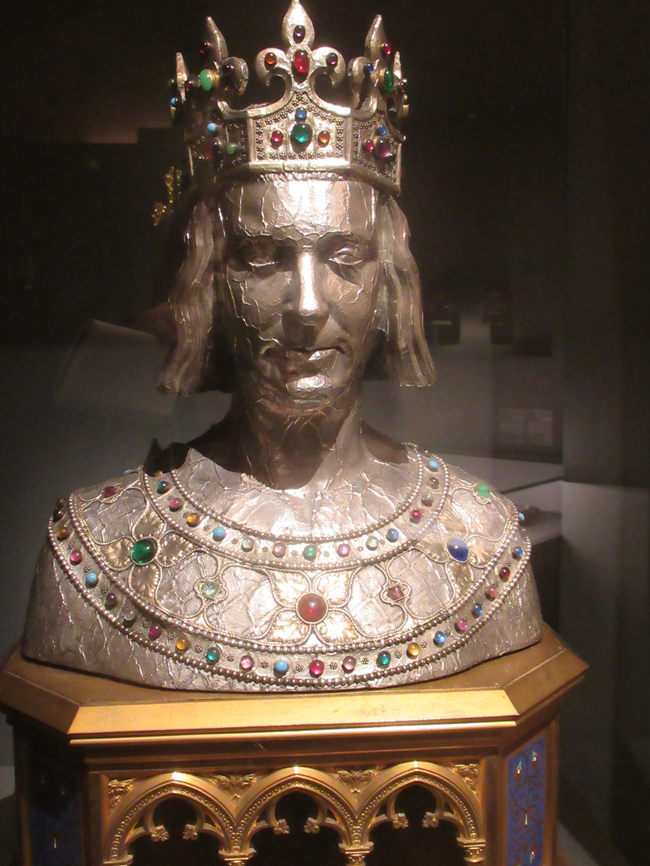
Bust of Louis IX. Photo: Marian Jones
8. The stories behind the objects are often revealing. The Louis XIII medals, cast to commemorate the vow he made at Notre Dame, are originals, but they are not from the cathedral’s treasury. Those were melted down during the revolution, so the curators have gathered examples from other sources, a back story which enhances their interest. Similarly, you understand the beautiful jeweled chalices from Valladolid and Augsburg better when you read that they came to the cathedral as cultural trophies, stolen from their original owners by Napoleon’s troops.

Louis XIII vow at Notre Dame cathedral in 1638. Photo: Marian Jones
9. Here, as so often in exhibitions, the work of the curators is easily overlooked. Objects from the cathedral’s collections, cleaned, restored and supplemented by items sourced elsewhere, are thoughtfully displayed with basic information, then a wealth of background material is added in the catalogue. Clever juxtaposition can aid understanding, such as where objects included in David’s depiction of Napoleon’s coronation are displayed next to the painting, meaning you look more closely at both. But curation has its limits too. The precious Crown of Thorns and the fragment of wood from the True Cross would be marvelous additions to this exhibition, but they remain in the nearby Church of Saint-Germain-l’Auxerrois. A pity!

Crosse de Notre-Dame de Paris, vers 1200. Département des Monnaies, médailles et antiques, Bibliothèque nationale de France.© Bibliothèque nationale de France
10. How much was so nearly lost! In the 21st century it wasn’t revolution or looting which threatened the collection at Notre Dame’s Treasury. It was fire. Seeing this exhibition makes you give thanks all over again for the work of so many who helped avert a total disaster. The firemen who brought the blaze under control, the cathedral staff who carried so many precious artifacts to safety, the nearly 1,000 workers who are preparing new timber frameworks, reconstructing vaults and buttresses and restoring beauty to stained glass.
It’s been a long five years since the cathedral was forced to close. But here you can admire some of its finest treasures and recall the many centuries of history which it represents. It’s a most welcome opportunity as we await the reopening of Notre Dame later this year.
DETAILS
The Treasury of Notre Dame Cathedral
At the Louvre until January 29th
Admission 17€ (22€ from January 15th). Includes entry to the permanent exhibitions
Open daily except Tuesdays 9 am – 6 pm (Fridays until 9:45 pm)
Lead photo credit : Notre Dame from the Seine © Hannah Reding, Unsplash
More in Louvre, notre dame, walking tour


